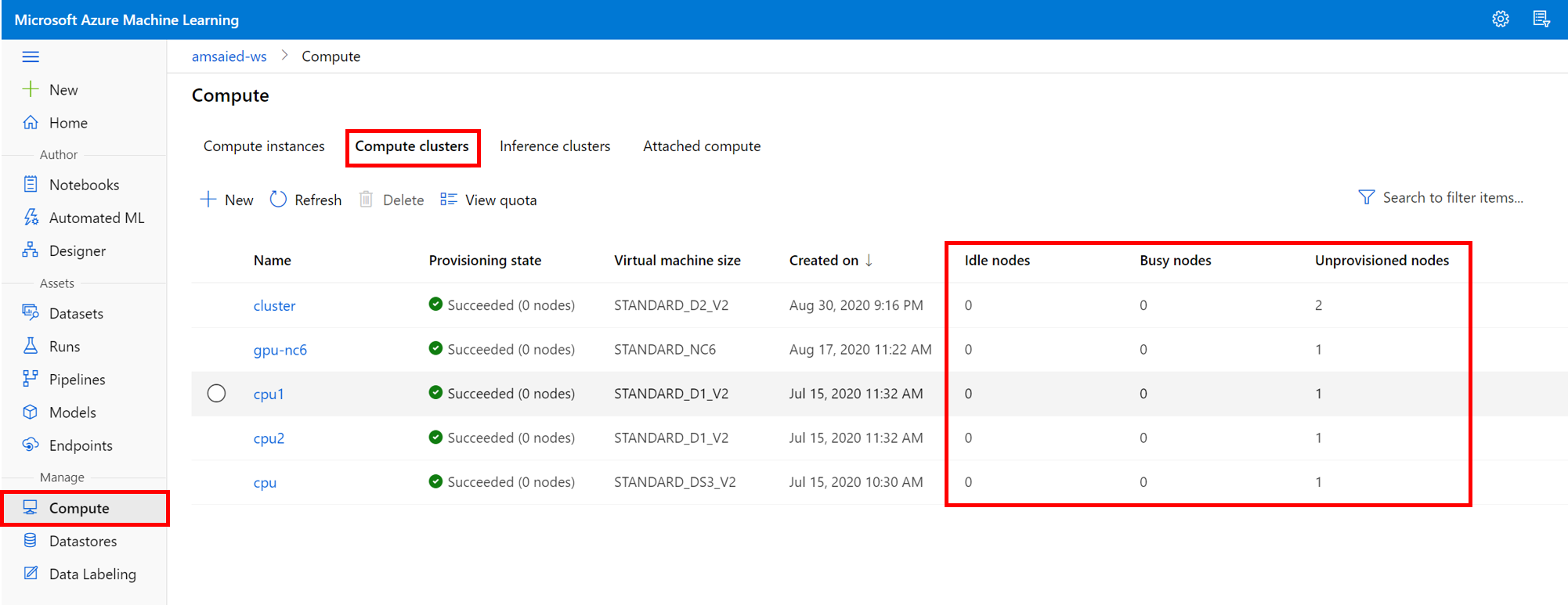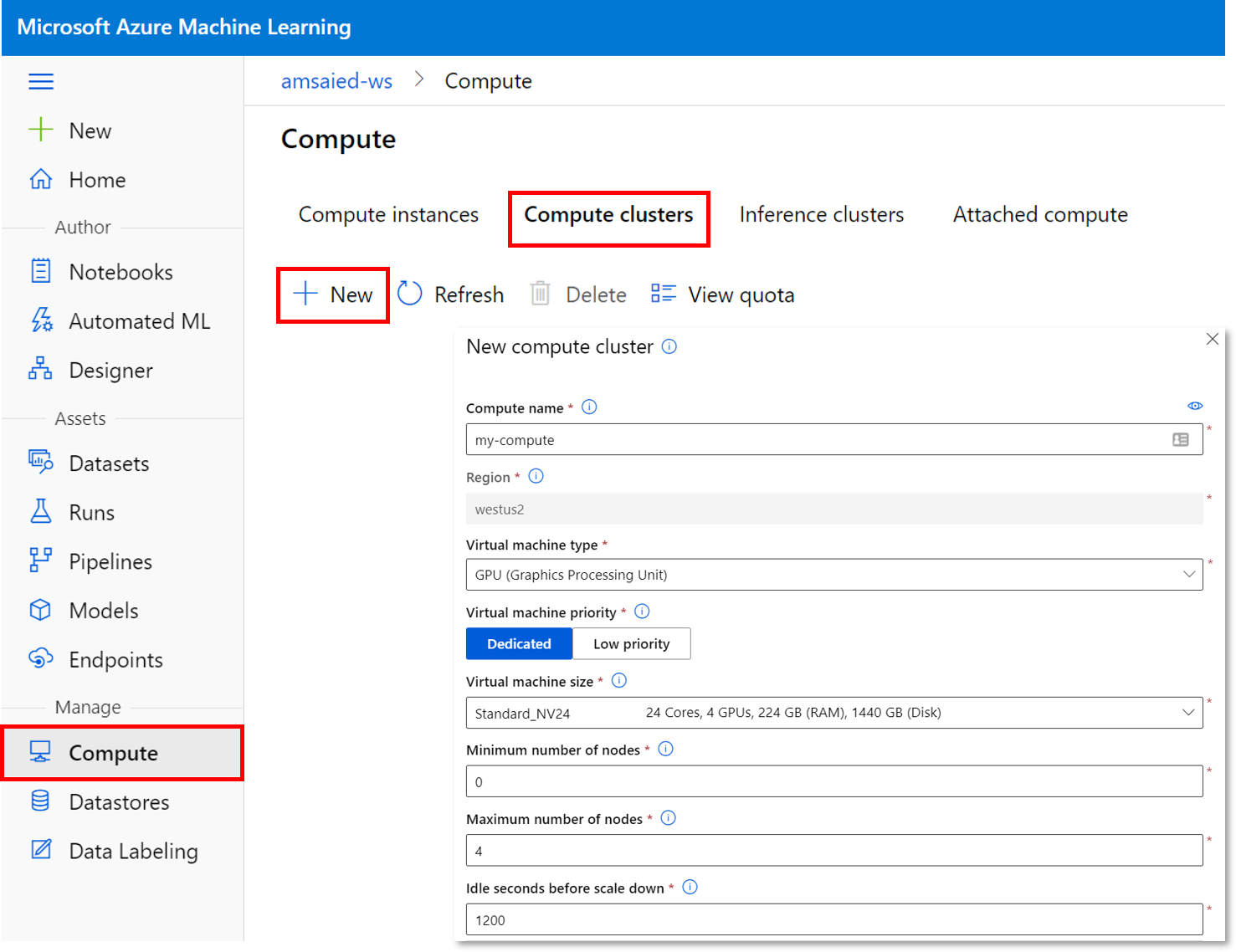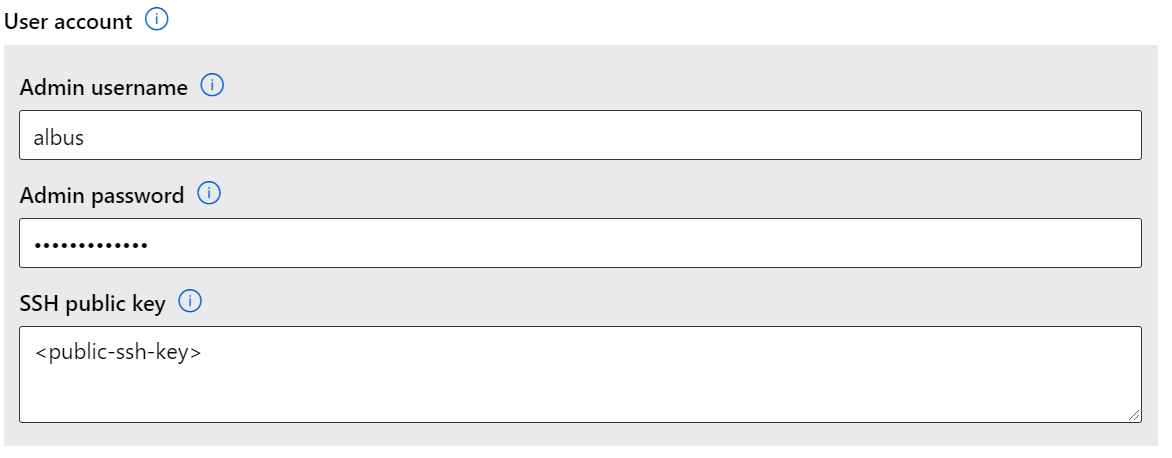Compute Target
Compute targets are an AML abstraction around the concept of a compute resource. This can range from your local machine to a cluster of Azure VMs.
Get Compute Target#
To get an existing compute target within a workspace ws:
List Existing Compute Targets#
To get a list of compute targets within a workspace ws
Check availabilty#
A very common task - especially if you are sharing a workspace within a team - is
to check the compute resources available within a workspace ws prior to submitting
a job.
The easiest way to do this is via the studio.

Creating Compute Targets#
The easiest way to create a new Compute Target is via the studio
Select the "Compute" menu > Select "Compute clusters" tab > Select the "+ New" button:

Complete the following info:
- Compute name: This will be used later to reference the compute. Name is required. Name must be between 2 to 16 characters. Valid characters are letters, digits, and the - character
- Virtual Machine type: Either CPU or GPU
- Virtual Machine Priority: Either "Dedicated" or "Low priority"> Low priority virtual machines are cheaper but don't guarantee the compute nodes. Your job may be pre-empted.
- Virtual Machine Size: Select from a drop down list. See the full list here
- Min / Max number of nodes: Compute will autoscale between the min and max node count depending on the number of jobs submitted. By setting min nodes = 0 the cluster will scale to 0 when there are no running jobs on the compute - saving you money.
- Idle seconds before scale down: Idle time before we scale down the cluster to the minimum node count.
Note: Machine Learning compute is always created in the same region as the Machine Learning service workspace.
with SSH#
Enable SSH access on your compute target by selecting the "Advanced" drop-down and entering the admin username/password as well as providing the SSH key.

Low Priority Compute Targets#
Low priority compute targets are cheaper but don't guarantee the compute nodes. Your job may be pre-empted.
via the SDK#
To create a compute target in code with the SDK: